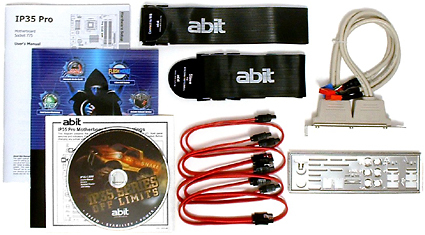Eight P35-DDR2 Motherboards Compared
BIOS And Overclocking
CPU and DRAM voltage settings go way beyond anything needed to extract the highest possible clock speed from an Intel Core 2 series processor and DDR2 memory. A wide range of bus frequency and DRAM ratios also allows you to push to get the most out of these parts.
| BIOS Frequency and Voltage settings (for overclocking) | |
|---|---|
| FSB Frequency | 133 - 600 MHz (1 MHz) |
| Clock Multiplier Adjustment | Yes |
| DRAM Frequency | FSB clock x 1.0, 1.2, 1.25, 1.5, 1.66, 2.0 |
| PCIe Clock | 100 - 200 MHz (1 MHz) |
| CPU Vcore | 1.325 - 1.895 Volts (0.010 Volts) |
| CPU FSB Voltage | 1.20 - 1.49 Volts (~0.04 Volts) |
| Northbridge (MCH) | 1.25 - 1.72 Volts (~0.04 Volts) |
| Southbridge (ICH) | 1.05 - 1.38 Volts (~0.04 Volts) |
| DRAM Voltage | 1.80 - 3.00 Volts (0.025 Volts) |
| CAS Latency Range | |
| tCAS: 4-6; tRCD: 3-10; tRP: 3-10; tRAS: 9-24 |
The IP35 Pro took our aging 3.46 GHz capable Intel Core 2 Duo E6700 engineering sample to an adequate 3.44 GHz at 1.50 volts core and its stock 10X multiplier. Dropping the CPU multiplier to 6X allowed a stable 457 MHz FSB clock (FSB1828) to be reached in this bus-speed-resistant processor.
Accessories
| Accessories | |
|---|---|
| Documentation & Software | Motherboard ManualAbit "Guru" User's GuideJumper Reference CardMotherboard Driver CD |
| Hardware | 1x 80-conductor Ultra ATA cable1x Floppy Cable4x SATA Data Cable1x Port Breakout Plate (2x USB, 2x IEEE-1394)1x I/O Panel Shield |
Abit includes the basic cable kit needed to build a typical upper-range system, with four SATA cables being only two fewer than the six SATA ports.
Abit also puts two IEEE-1394 FireWire connectors and two USB 2.0 ports on the same plate, which saves a slot compared to using separate ones.
The Abit IP35 Pro is available from around $185 at various web stores.
Get Tom's Hardware's best news and in-depth reviews, straight to your inbox.

